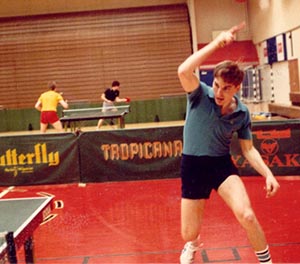USATT National Coaching Program Update
Here's the USATT news item on these big changes to our national team coaching system. If you are interested in applying as a coach for one of the National Teams – I believe these would include Men, Women, Junior Boys, Junior Girls, Cadet Boys, Cadet Girls, Paralympic - you need to apply by this Monday. I'll blog about this probably next week. (I'm putting this first because of that deadline. I may move this down later on.)
USATT Board of Directors Minutes and Illegal Hidden Serves
Our long national nightmare is over . . . the minutes to the USATT Board Meeting at the USA Nationals in December is finally up – four months later! So are the minutes to USATT Board Teleconferences in January and April. They are all linked from the USATT Minutes page.
Readers of this blog and anyone who's been paying attention to the sport knows about the problem we're having with illegal hidden serves. Our sport has developed a culture of cheating, where umpires allow players to illegally hide their serves, making receive very difficult, and giving the cheating player a big advantage. (Yes, hiding your serve to gain unfair advantage is cheating, and if you don't see that, you are in denial.) Nearly every major title at the USA Nationals, U.S. Open, and major events around the world are decided by illegally hidden serves. Because players cannot fairly compete when the umpire allows an opponent to hide their serves, nearly every top player, and now nearly every top cadet (under age 15) has been forced to learn to cheat hide their serve.


 Photo by Donna Sakai
Photo by Donna Sakai


